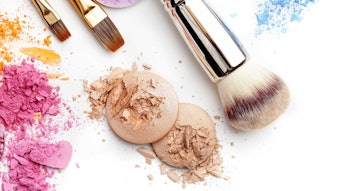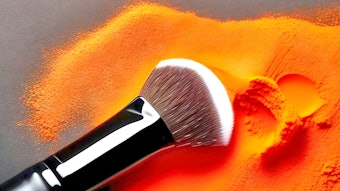Here is my first column about pigments. I admittedly know nothing about pigments, which is probably the most enticing and stimulating reason for continuing reading. As a skin biologist, there is only one pigment, melanin, which consists of eumelanin and phaeomelanin. These are the pigments that give color to our skins, provide utterly unjustified reasons for discrimination and aggression, unite and separate nations and make you look sexy. But one thing is universal about skin pigment; people always want what they do not have. Caucasians want to be tan and Asians want a whiter skin complexion. The expression, the grass is always greener on the other side, is chromatologically not completely accurate, but you get the point. So, what can I talk about when I should not speak about eumelanin and phaeomelanin but still want to fill a column about pigments?
I could write about titanium dioxide that, depending on size, is white or colorless. But that would lead into a biologically-oriented column. I would argue that scattering and the related is physical and, although you would have to admit that I was right there, I would have to admit that the benefit would be biological. But let me reveal a little bit of mind-boggling innovation that I encountered not too long ago. Someone was deliberately using large TiO2 particles in a skin-whitening cream containing a biologically-active agent. Most people would automatically add a sunscreen agent to every skin whitening formulation to compensate for the reduced photoprotection caused by the reduced amounts of melanin in your skin, but this innovation provided immediate skin whitening. You could probably just stick your head in a bucket of white paint and have the same effect. And with that, I am back at square one...pigments.
Pigments are everywhere, and the cosmetics industry comes from pigments. It was the paint industry and its pigments that initiated the emergence of the pharmaceutical industry. And you can probably state with some degree of correctness that the cosmetics industry emerged from the pharmaceutical industry; at least that is what a biological scientist would say. The first thing you need to know about pigments is that they are particles, and particle science is an up-and-coming subject in cosmetics. If you looked at the recent contributions of Korean scientists at the last couple of IFSCC congresses and conferences, you will see that pigments constitute a disproportionally large fraction of their cosmetic science. These Koreans are fundamentally different in their approach to cosmetics. Many product creators focus their attention on the biology of skin and hair, especially on the molecular biology of skin and hair, but it is nearly impossible to understand the explanations of mechanisms of action explained by active ingredient suppliers unless you have a doctorate in molecular biology. The Korean scientists are just that little bit smarter than the rest of us, in that they use pigments to fill up lines and wrinkles for immediate anti aging benefits
If you already know about pigments, that is not novel. Many suppliers in the Western world and probably the Eastern world use pigments to fill wrinkles. But what the Korean scientists do better than anybody else, is that they do not just fill lines and wrinkles, but also modify particle surfaces to give additional benefits like an even skin tone and less shine. They were getting it right while the rest of us worried about what to do when our biologically active ingredient was getting too active and was in the running to become a drug. They focus on the physical side of things and never have to worry about this change in regulatory status if their active is getting too active. Their pigments do not need to penetrate to deliver benefits, they can engineer their desired properties on the surface of the particle, they can easily test their materials, they can achieve a physical effect without affecting the underlying biology, and on top of all this, they do not face regulatory problems.
I may not know a lot about pigments, such as the meaning of abbreviations like D & C or FD & C, but I have a pretty accurate guess. I also may not know what a Lake is apart from an enclosed body of fresh water, but I do know that these Koreans are doing a great job in overcoming scientific and regulatory hurdles. Koreans KISS, or in case you do not like acronyms, Koreans Keep It Stupid and Simple. After all, all we want in cosmetics is to have an immediate result from whatever product we apply, something that we can control and dose and particulate science allows you to do so. By manipulating the surface, formulators can create the effect they want whereas in skin biology forces scientists to find out how things work first and then find a chemical that can modulate this often delicate balance to their advantage. That chemical then needs to be penetrating the skin and reach the site of action in sufficient quantities for a sufficient period of time to do what it is supposed to do. The Korean scientists do not have delivery issues. They slap it on the face and the job is done. No waiting for months for dermal fibroblast to re-orient themselves; they fill the wrinkles within minutes if not seconds. All they need are some particles and some clever particle surface chemists to get the job done in no time.
You are probably going to ask what particles you need and what type of surface chemistry you need to apply, but now I hide myself behind the fact that I know nothing about pigments... I need to run. I will be back next month with a column on anti aging. I will be a month older then, and no product that can stop that, unless it is toxic. I am off now to Korea to learn about pigments. Pigments, pigments, everywhere….
Johann W. Wiechers, PhD
Technical Advisor, Allured Publishing Corp.
Independent Consultant in Cosmetic Science, JW Solutions
Gasthuispolderweg 30 2807 LL Gouda, The Netherlands
[email protected]










